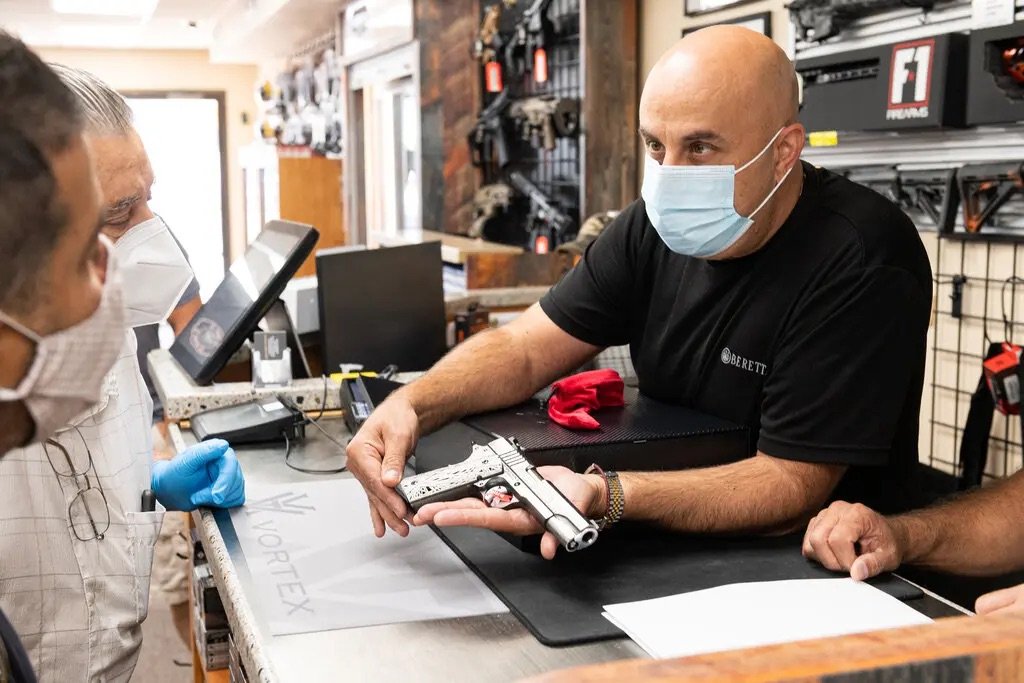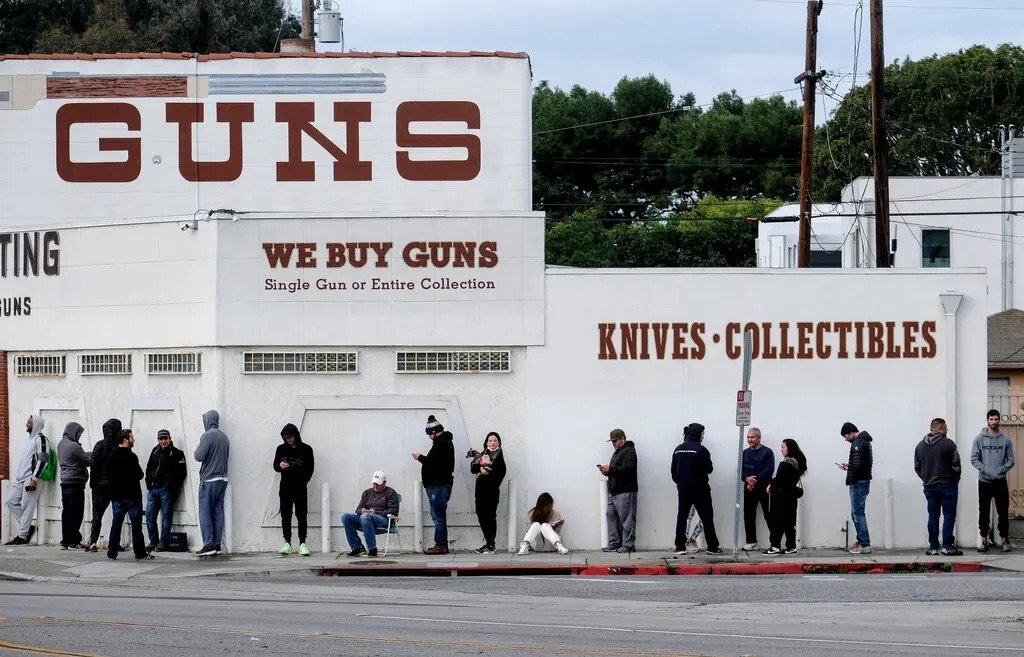Why Some Americans Buy Guns



A gun shop on Long Island in 2020. Gun sales were up 64 percent that year over 2019, with some 22 million guns sold.Credit...Mike Pont/Getty Images
Sociologists are just beginning to understand who is buying guns and how gun ownership makes them feel.
In 2020, while many communities were under Covid lockdowns, protesters were flooding the streets and economic uncertainty and social isolation were deepening, Americans went on a shopping spree. For firearms.
Some 22 million guns were sold that year, 64 percent more than in 2019. More than eight million of them went to novices who had never owned a firearm, according to the firearm industry’s trade association, the National Shooting Sports Foundation.
Firearm homicides increased that year as well, to 19,350 from 14,392 in 2019. The death count from guns, including suicides, rose to 45,222 in 2020 from 39,702 in 2019. The number of lives lost to guns rose again in 2021, to 48,830.
After quashing research into gun violence for 25 years, Congress began funneling millions of dollars to federal agencies in 2021 to gather data.
Here is what social psychologists are finding about who purchased firearms, what motivated them and how owning, or even holding, a firearm can alter behavior.
Who Started Buying Guns?
Millions of Americans who had never owned a gun purchased a firearm during a two-and-a-half-year period that began in January 2019, before the pandemic, and continued through April 2021.
Of the 7.5 million people who bought their first firearm during that period, a survey found, 5.4 million had until then lived in homes without guns.
The new buyers were different from the white men who have historically made up a majority of gun owners. Half were women, and nearly half were people of color (20 percent were Black, and 20 percent were Hispanic).
“The people who were always buying are still buying — they didn’t stop. But a whole other community of folks have come in,” said Michael Anestis, the executive director of the New Jersey Gun Violence Research Center, who was not involved in the survey.
Outside a gun store in Culver City, Calif., in March 2020.Credit...Ringo H.W. Chiu/Associated Press
Why did Americans decide to buy guns?
Self-defense is the top reason Americans purchase handguns. But a study of individuals who said they were planning to purchase a first or second firearm during the early days of the pandemic found that would-be buyers were more likely to see the world as dangerous and threatening than individuals who were not planning to purchase a firearm.
Those planning to buy firearms were more likely to agree strongly with statements like “People can’t be trusted,” “People are not what they seem” and “You need to watch your back,” compared with those not planning a purchase, noted Dr. Anestis, an author of the study.
Buyers were also more fearful of uncertainty. They tended to strongly agree with statements such as “Unforeseen events upset me greatly” and “I don’t like not knowing what comes next.”
They were particularly frightened by Covid, according to the study, which was conducted in June and July 2020. They were more likely to be essential workers. Dr. Anestis, who studies suicide, said those planning to purchase a gun were also more likely to harbor suicidal thoughts.
More than half of all gun deaths in the United States are suicides. In 2021, for example, there were 48,830 gun deaths; 26,328 were suicides.
“Firearm owners are no more likely to have suicidal thoughts than nonowners,” Dr. Anestis said. “But if you look at who purchased a firearm during the surge, and if it was their first firearm, they were much more likely than others to have had suicidal thoughts in the last month, year or lifetime overall.”
The number of suicides did not increase during the pandemic, but the presence of a gun in the home increases the risk for as long as the family owns the gun. And while research shows that some people buy a gun while they are planning a suicide, most people who used a gun to kill themselves already owned the firearm — for 10 years, on average.
Families with teenagers who kept one firearm loaded and unlocked were more likely to buy another firearm during the pandemic, other researchers have found. It’s possible the families were keeping guns easily accessible because they feared for their safety, and that this concern motivated the purchase of an additional firearm.
But these households are particularly vulnerable to gun injuries, said Rebeccah Sokol, a behavioral scientist at the University of Michigan and a co-author of the study. “Teens have some of the highest rates of firearm fatal and nonfatal injuries,” she added.
Brett Bass at a table giving out lockboxes and sharing information about suicide prevention at a gun show in Spokane, Wash.Credit...Ruth Fremson/The New York Times
To some, guns bring comfort
Experiments have shown that human touch can be remarkably soothing. In one study in 2006, for example, neuroscientists found that when married women were subjected to mild electric shocks as part of an experiment, reaching out to take their husband’s hand provided an immediate sense of relief.
Nick Buttrick, a psychologist at University of Wisconsin-Madison, wanted to know whether firearms provided similar comfort to gun owners, serving as a sort of psychological security blanket.
“The real question I wanted to answer was, What do people get out of having a gun?” he said. “Why would somebody want to take this really dangerous thing and bring it into their lives?”



